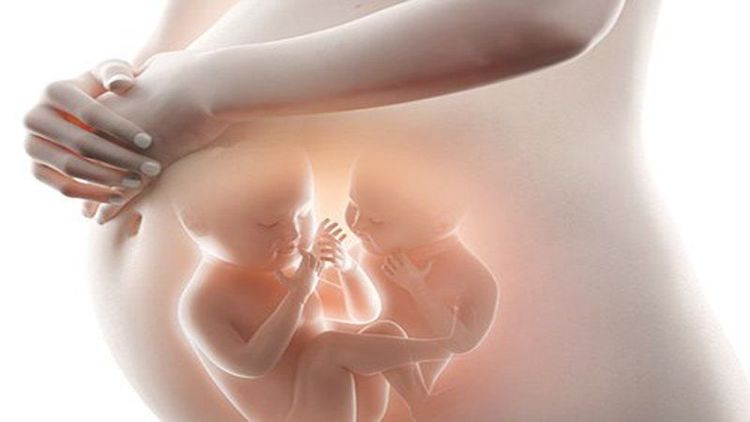This article is professionally consulted by Dr. Tran Thi Mai Huong, Specialist Level II, Obstetrics and Gynecology Department, Vinmec Hai Phong International General Hospital.
Cesarean section is a major abdominal surgery to help deliver the fetus from the mother's body. There are two methods of cesarean section: horizontal incision and vertical incision. Each method has its own advantages and disadvantages.
1. Should the cesarean section be performed with a horizontal or vertical incision?
Cesarean section is a surgical method to remove the fetus, placenta, and amniotic sac from the abdominal cavity through an incision made on the abdominal wall and the uterus, leaving the uterus intact.
A cesarean section is a major abdominal surgery with higher risks of complications compared to vaginal birth. Common clinical complications include bleeding after the cesarean, postoperative pain, wound infection, uterine and abdominal infections, and a longer recovery time.
There are two methods of cesarean section: horizontal incision and vertical incision.
Horizontal incision method:
• This is a cesarean section method where the incision is 10-12 cm long, located on the pubic bone, right at the bikini line.
• Advantages: The scar is aesthetically pleasing and heals quickly.
• Disadvantages: It takes more time and has a higher risk of bleeding compared to the vertical incision method.

Vertical incision method:
• This is a cesarean section method where the incision is made from just below the navel to the pubic area (running along the midline below the navel). The incision passes through the layers of skin, fat, abdominal muscles, and into the uterus.
• Advantages: This method allows for quick execution, with less time needed. It is convenient and suitable for emergency cesarean situations such as uterine rupture, ectopic pregnancy with heavy bleeding, or significant blood loss after childbirth. With this method, if complications arise during the procedure requiring an enlargement of the incision, this can be done.
• Disadvantages: Compared to horizontal incisions, vertical incisions tend to be less aesthetically pleasing and have a higher risk of resulting in hypertrophic scars.
Both the vertical and horizontal cesarean section methods have their own advantages and disadvantages, suited to different circumstances and the health condition of both the mother and fetus during labor. Clinically, 90% of cesarean sections are performed using the horizontal incision method because the incision heals faster, is more aesthetically pleasing, and has fewer complications compared to the vertical incision method.
In practice, the choice of method is made by the surgeon based on the current situation of both the mother and baby, with the ultimate goal being to safely deliver the baby from the womb without compromising the mother's health and minimizing complications during and after surgery.

2. When is a cesarean section necessary?
Cesarean section is an essential method in obstetrics. However, compared to vaginal delivery, cesarean section carries a higher risk of complications. On the other hand, in vaginal delivery, the recovery of the mother and the development of the baby after birth are generally more favorable compared to a cesarean section.
Therefore, clinically, if not absolutely necessary, vaginal delivery is the preferred method. In some cases, where vaginal delivery is initially chosen, but complications arise during labor, a cesarean section may become mandatory. So, the question is, in which cases should a cesarean section be indicated?
Indications for cesarean section:
Before labor:
• A history of previous cesarean section.
• Abnormal fetal position such as breech or transverse lie.
• Multiple pregnancies, such as twins.
• Fetal abnormalities.
• The mother has certain genital conditions that could be transmitted to the baby, such as genital herpes, syphilis, gonorrhea, genital warts, or genital infections.
• The mother has placenta previa or placental abruption.
• The mother has preeclampsia, which poses a danger to both herself and the fetus during labor.

During labor, the following situations require a cesarean section to avoid danger to both the mother and the fetus:
• Abnormal fetal health during labor, such as fetal distress.
• Cases of umbilical cord prolapse or cord prolapse around the neck, which can affect the baby’s breathing and obstruct labor progress.
• Placental abruption or sudden detachment of the placenta.
A cesarean section is a major abdominal surgery that can pose several risks and complications for the mother if the surgery is not performed according to safety guidelines. Not every case of labor requires a cesarean section. The choice between a horizontal or vertical cesarean section depends on the specific circumstances.
To arrange an appointment, please call HOTLINE or make your reservation directly HERE. You may also download the MyVinmec app to schedule appointments faster and manage your reservations more conveniently.
To arrange an appointment, please call HOTLINE or make your reservation directly HERE. You may also download the MyVinmec app to schedule appointments faster and manage your reservations more conveniently.











